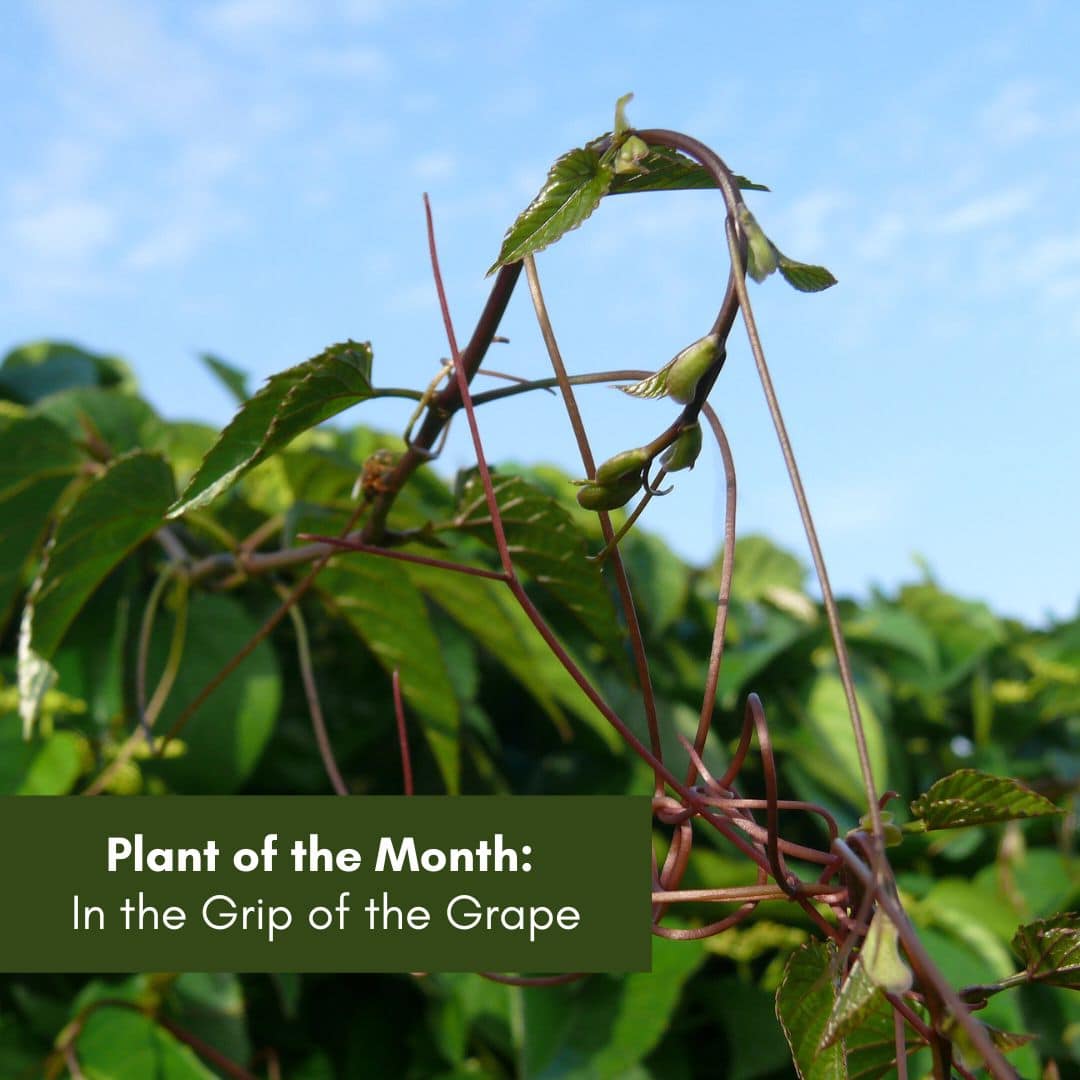You may not know it but Australia has quite a few native members of the grape family (Vitaceae). We’re all familiar with Vitis vinifera (and other table and wine grapes) but less well known is that Australia is home to around 30 members of the Vitaceae family, occurring in all mainland states except South Australia (though I think they make up for it with production of Vitis vinifera).
Australian native grapes have been used for eating and making jam, however sugar content would be too low for wine making (even if you could get enough, they can grow fairly vigorously so be careful where you plant them. The main grapes around the Hunter are:
Slender Grape (Cayratia clematidea), which can be confused with Balloon Vine however Slender Grape has tendrils and fleshy fruit whereas the Balloon Vine has inflated fruits and hairy stems. The fruit are edible, however they do have an unpleasant stinging sensation after about half a dozen. The slender grape has edible tubers which have been eaten after roasting. I’ve tried them raw but they tasted like dishwashing detergent (and don’t ask me how I know what dishwashing detergent tastes like, it just does).
Images from plantnet.rbgsyd.nsw.gov.au
Kangaroo Grape, Kangaroo Vine (Cissus antarctica), a very vigorous rainforest climber, recognisable by it’s serrated, furry new leaves (and tendency to grow over everything), again, can cause irritation after a few but apparently can be stewed up with sugar to make dessert or jam. I haven’t found them to be particularly tasty but a mate’s kids would regularly eat them to no apparent ill effect.
Images from plantnet.rbgsyd.nsw.gov.au
5 Leaf Water Vine (Cissus hypoglauca), as the common name suggests the leaf arrangement is quite distinctive being 5 foliate, the “water vine” comes from it being reputed to be a source of water (I’ve never tried it so can’t confirm), another vigorous rainforest species, though not as vigorous as the C. antarctica it is reported by Cribb & Cribb (Wild Food in Australia) as varying in quality from insipid to “not too inferior to a domestic grape”.
Image 1 from plantnet.rbgsyd.nsw.gov.au
Image 2 from: https://resources.austplants.com.au/plant/cissus-hypoglauca/
What’s in a Name?
| English | Latin | Greek |
| blue-grey | glauci | glauco |
| brittle | fragili | acampo , clao |
| Dark blue | caurulei- | cyano- |
| dry | Aridi, sicci | Azalea-, xero- |
| head | capiti- | cephalo- |
| few | pauci- | Oligo-, pauro-, spano- |
| food | Cibi, prabuli | Bromato-, -broma, sitio- |
| God | Dei- | Theo- |
| jagged | serrati- | carcharo- |
| stuffed | farcti- | sacto- |
And some test ones, what could these names refer to?
Xerochrysum
Theobroma
Casuarina glauca
Dianella caerulea (bonus point for why Littoria caerulea is so named?)
Answers to last month.
Exocarpos cupressiformis? Outside fruit Cypress like (the fruit/seed is attached to a swollen pedicel)
Podocarpus spinulosus? Foot fruit, spiny (have a look at the photo in last month)
Chrysocephalum apiculatum? Golden headed, (leaf) ending with abruptly in a short point
Corymbia maculata? Corymb (refers to the flower arrangement), spotted

